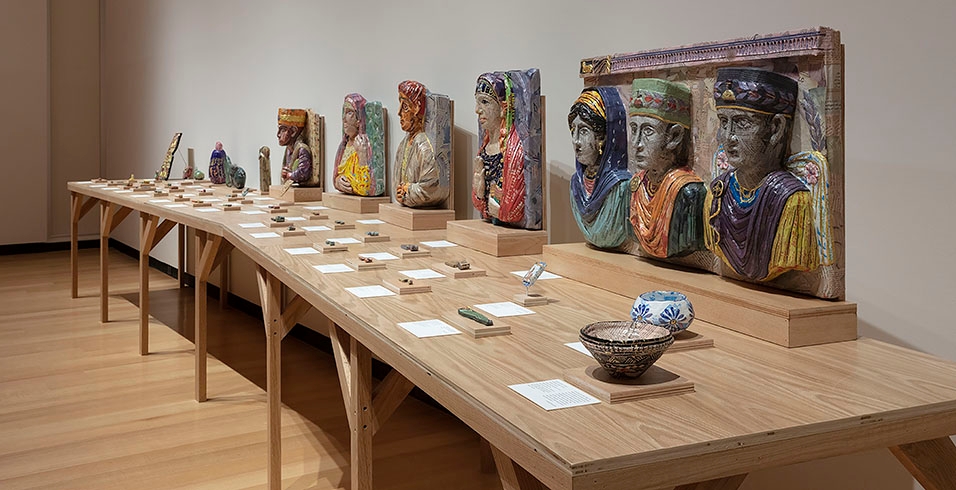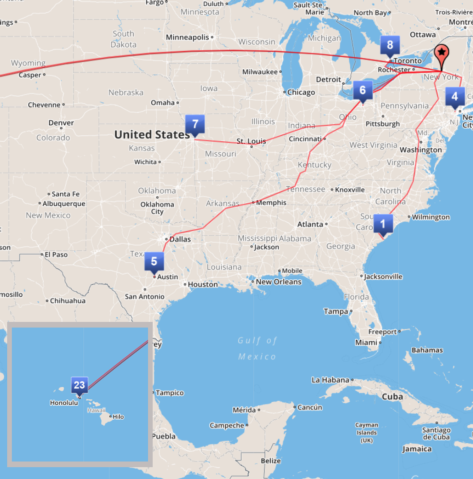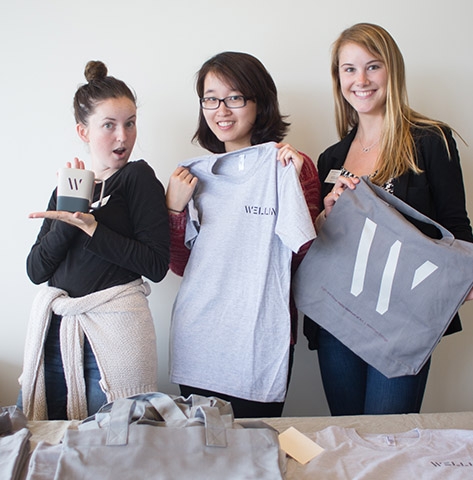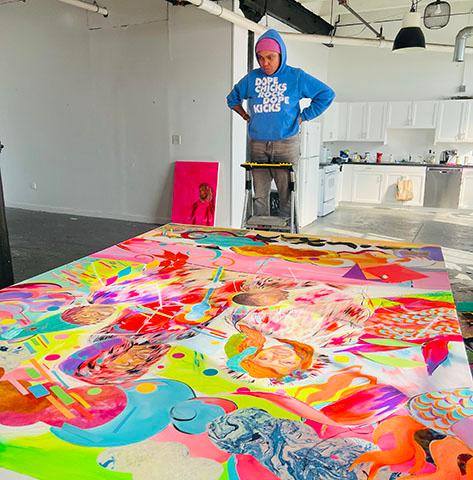John Bentham

We were at once excited and nervous when we found out that we would have the opportunity to participate in curating part of the Wellin Museum’s current exhibition, Michael Rakowitz: Nimrud. The piece that we would be working on was from Michael Rakowitz’s ongoing series, “The invisible enemy should not exist.” It is made up of forty four small-scale sculptures that replicate artifacts stolen from the National Museum of Iraq in Baghdad after the U.S. invasion in April 2003 as well as artifacts that were lost or damaged during the ongoing civil war in Syria. As part of a long-standing tradition, Rakowitz asks a guest — usually a historian or curator — to arrange the objects in a way the individual deems fit. As student assistants at the Wellin Museum, we were given the opportunity to determine the arrangement of the objects. As we considered how we should approach organizing these artworks, the first thing we found ourselves studying was the provenance of each artifact that Rakowitz reappears. We searched for information about the history of each location, but had trouble finding connections that might inform our organization of the artifacts. On a whim, we decided to punch each of the locations into Google Maps to visualize their geographical relationships. Looking at the “road trip” we had created, with stops in each artifact’s point of origin, we noticed connections to Rakowitz’s ideas about the series.
“The invisible enemy should not exist” is one translation of Aj-ibur-shapu, the main processional avenue of ancient Babylon. The sculptures are displayed on a table that is intended to look temporary, evoking the frantic cataloging of returned artifacts at the National Museum of Iraq following the 2003 lootings. The table also features a 10 degree bend, mirroring the trajectory of Aj-ibur-shapu. These references to movement seemed to situate the table as a liminal space for the artifacts, and we noticed relationships between the artifacts’ literal journeys, the title of the series, and the trip we imagined along modern roadways. The table’s organization would group sculptures by the provenance of the artifacts on which they are based. Thus, each end of the table represented the beginning or the end of this journey.
Presenting our ideas to Rakowitz was both nerve-wracking and exhilarating. Due to the virtual landscape of the current times, we, along with thirty other Wellin student docents met Michael Rakowitz on a Saturday afternoon in October — him in Chicago, and us in our dorm rooms on campus. Preceding this conversation, we had buried ourselves in material about his work and his process, and yet, listening to him talk about Nimrud and its significance to Iraqi culture was incomparable. His art reflects the thoughtful and intentional voice he wants reinstated for the Iraqi people and we wanted him to know that we approached our task for the exhibit with respect and appreciation. That afternoon, we presented our idea to him and his response couldn’t have been more encouraging. He really liked our theme of the journey and wholeheartedly approved our curation. Within the next two weeks we saw our blueprint come to life at the Wellin Museum. In the five months since, we have led multiple tours and workshops based on Michael Rakowitz: Nimrud and it has been an incredibly enriching experience. Not only did we get to interact with this fascinating exhibit, but also we had the opportunity to be a part of its installation, which is more than anything we could have imagined in our college careers.







